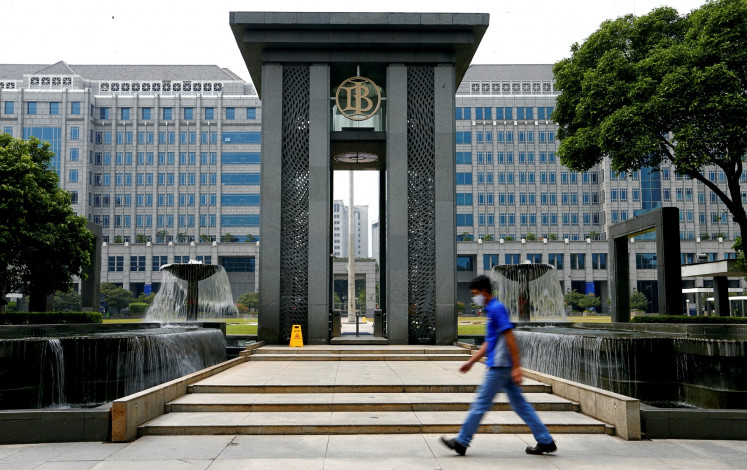Healthy GDP growth in 2010 on rising investments: Govt
The increase in Indonesia’s gross domestic growth (GDP) last year has been considered encouraging as it indicates a rise both in private consumption and investments, analysts agree
Change text size
Gift Premium Articles
to Anyone

T
he increase in Indonesia’s gross domestic growth (GDP) last year has been considered encouraging
as it indicates a rise both in private consumption and investments, analysts agree.
Although the country’s economy in 2010 was still mainly driven by household consumption, accounting for 56.7 percent of total GDP, the contribution investments made to economic growth was growing, Standard Chartered Bank analyst Eric Sugandi said.
“The dynamic that has accelerated the economy is the return of investment,” Eric told The Jakarta Post in a telephone interview. Other analysts also considered last year’s economic growth relatively healthier than in previous years, as indicated by the improvement in the role of investments.
New investment contributed 32.2 percent to the country’s economy, mainly due to improved macroeconomic conditions in nearly all Southeast Asian economies. Indonesia pocketed an upgrade from major ratings agency Moody’s Investors Service last month to one notch below investment grade.
According to Central Statistics Agency (BPS) data, investment contribution grew from 31.1 percent in 2009 and 27.7 percent in 2008.
“Ample global liquidity, supported by brighter global investors’ perception of Indonesia helped boost investment,” Eric said, adding that surging global commodity prices also helped net exports contribute 23 percent to 2010 GDP.
The country’s economy grew at the fastest pace in six years in the fourth quarter of 2010, driven by strong domestic consumption and investment, BPS data shows.
The economy expanded 6.9 percent during the October-December period, which some economists considered “quite surprising”, not only because it exceeded the 5.8 percent growth in the previous quarter, but also surpassed analysts’ expectations.
The Indonesian economy grew 6.1 percent throughout 2010 — higher than the government’s initial 5.8 percent target printed in the 2010 state budget.
The latest economic figures showed that Indonesia had an economy that topped Rp 6,422.9 trillion and had a population of 237.6 million at the end of 2010. The country’s per capita GDP also rose to Rp 27 million versus Rp 23.9 million in 2009.
Government expenditures, at 9.1 percent, contributed the least to the country’s 2010 GDP growth, something which Finance Minister Agus Martowardojo said he would review and boost this year. “We will use it as a reference so that the government’s state budget disbursements could mend in 2011,” he told reporters at his office following the BPS announcement.
All nine sectors in the nation’s GDP basket gained, led by the transportation and communication sectors with combined 13.5 percent growth. The agricultural sector recorded the least growth of all nine sectors at just 2.9 percent.









